This “Limited Edition” 4K Ultra HD and Blu-ray set is now available from Arrow Video.
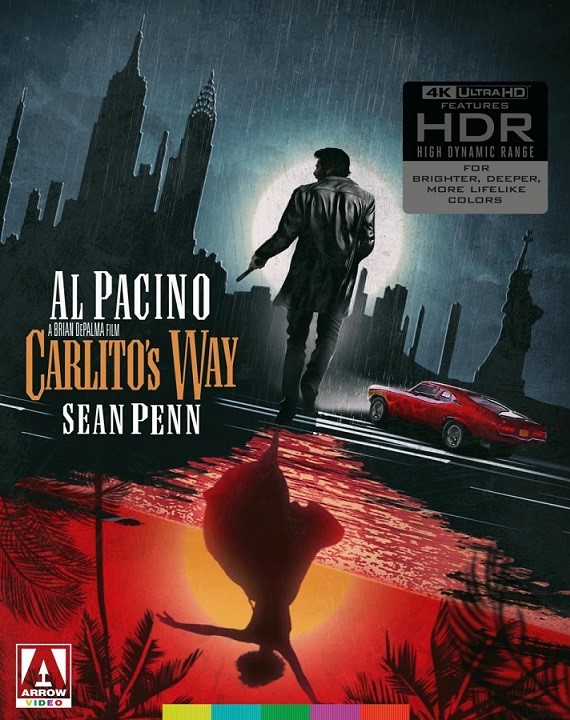
First things first… this reviewer is a big admirer of filmmaker Brian De Palma. I probably shouldn’t have been exposed to some of them at such a young age. But, having grown up in the 80s watching titles like Phantom of the Paradise, Carrie, Blow Out, Dressed to Kill, Scarface, The Untouchables and Casualties of War, I was immediately wowed by the visuals on display. While the events depicted were stylized, the elaborate camera movements and set ups felt very dynamic and even immersive. And as I grew older, the deeper themes and story details of his movies began to become clearer and more distinctive as well.
Arrow Video are now releasing a wonderful Limited Edition 4K Ultra HD and Blu-ray of the 1993 production Carlito’s Way. De Palma’s wildly visual tales are well suited for image upgrades and this new edition is as clean and sharp as it ever has been. The disc also includes a ton of archival extras from previous editions, a few new interviews and a couple of commentary tracks from De Palma experts. It’s a great disc and, of course, it also helps that the movie itself is exceptional.
For those who haven’t seen it, the story is set in the 1970s and begins with Puerto Rican gangster Carlito Brigante (Al Pacino) being released from a lengthy prison term after appeal by his lawyer, David Kleinfeld (Sean Penn). Thrilled to get his freedom and life back, Brigante considers himself retired and just wants to be left alone. He opens a nightclub and attempts to get back in touch with his girlfriend Gail (Penelope Ann Miller), in the hopes of rekindling their relationship and making good on his dream to leave once and for all to the Caribbean. But despite a high code of honor, the character eventually discovers that many old pals don’t possess the same ethics. Close friends are more than willing to sell him out, while up-and-coming hoods like Benny Blanco (John Leguizamo) want to eliminate him entirely. Since Brigante isn’t as vicious anymore, preventing his own demise becomes even trickier.
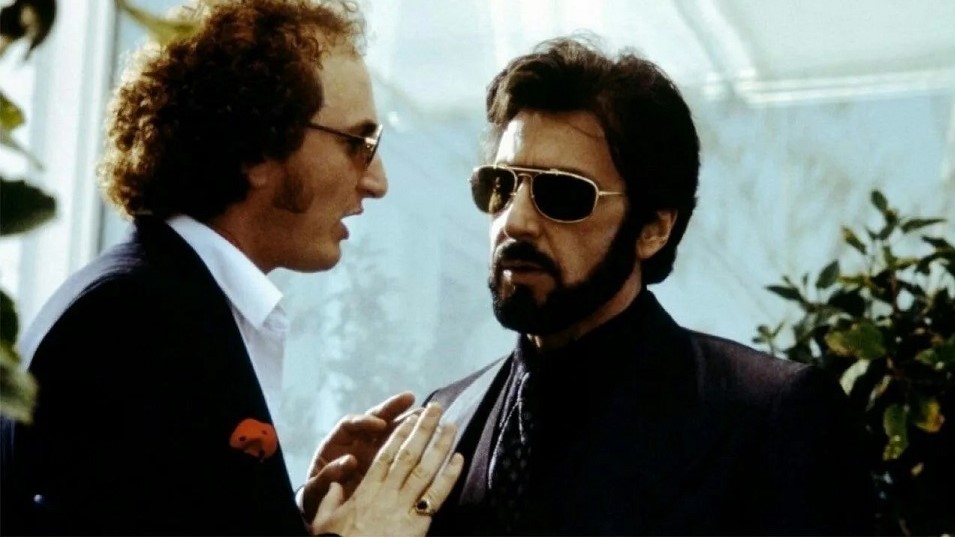
As mentioned, this is De Palma, so the movie opens with a well-choreographed, impressive floating and spinning camera shot. As the tale unravels, there are plenty of marvelous images throughout. Some are seemingly simple moments of the protagonist following his love through the rainy streets of New York to watch her dance, while others involve elaborate action. There’s an incredible shootout at a pool hall that builds tension exceptionally. Dutch tilts and a moving camera amplify several tense exchanges between Brigante, lawyer Kleinfeld and various hoods looking to do him in. And the final act features an incredible chase that follows the protagonist from a hospital to the subway and through Grand Central Station while mobsters are in pursuit. There are lengthy masters with the camera following Brigante that almost put viewers in his shoes. All of it is handled perfectly, maximizing excitement and providing plenty of unexpected twists and problems for the character as he attempts to accomplish his goal.
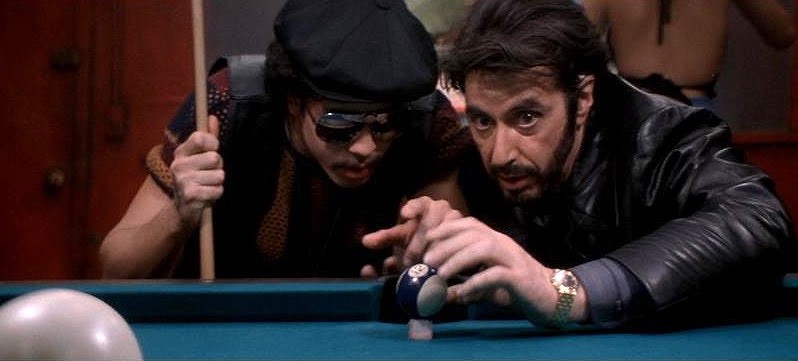
While it’s a great movie to look at, what becomes clearer on multiple viewing are the themes of the picture and the solid performances. Pacino’s character is a killer, but still manages to be charismatic and likable. His contrasting code of standing by friends while staying on the straight-and-narrow makes him a protagonist that is easy to root for. But it also makes him a flawed hero, with his moral code getting him into unnecessary trouble. By complete contrast, Penn is excellent as a sleazy lawyer who wants to be as powerful as the criminals whom he represents. Try as he might, his love of wealth and excess leads him, and by extension Brigante, into grave danger. Miller is also a solid female lead. There are plenty of onscreen sparks between the co-star and Pacino and the character has no problems standing up to him when he questions her choice of profession.
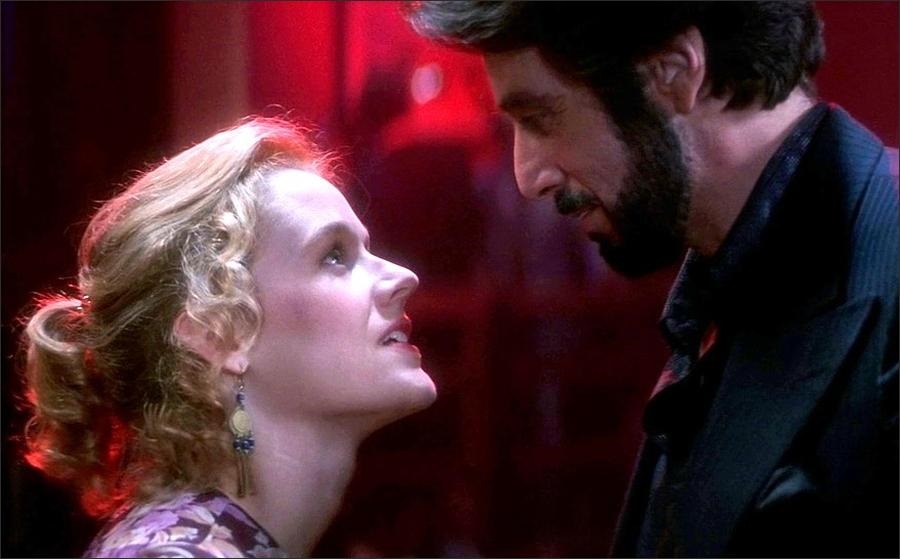
While I always enjoyed and appreciated the picture, critical reception wasn’t as strong during its initial release. Amusingly, I remember some complaining about the running time of 2 hours and 24 minutes being too long for a gangster/film noir pic. But it moves like a bullet, and in today’s era of 3 hour superhero flicks, this now sounds like a very silly beef. Thankfully, the movie has found a massive following over the years and it is a stellar effort that continues to entertain.
As mentioned, the image quality here is much improved over the old Universal Blu-ray. There are plenty of neon lights in the nightclub, 70s décor and authentic New York locations that look incredible in 4K. The extras are also a joy. The lengthy documentary made in the mid-2000s from a previous release is included and features plenty of fun tidbits. De Palma notes how he wasn’t interested in making another gangster movie, but admits that the material and love story eventually won him over. He also goes over the methods he uses to come up with his elaborate set-ups.
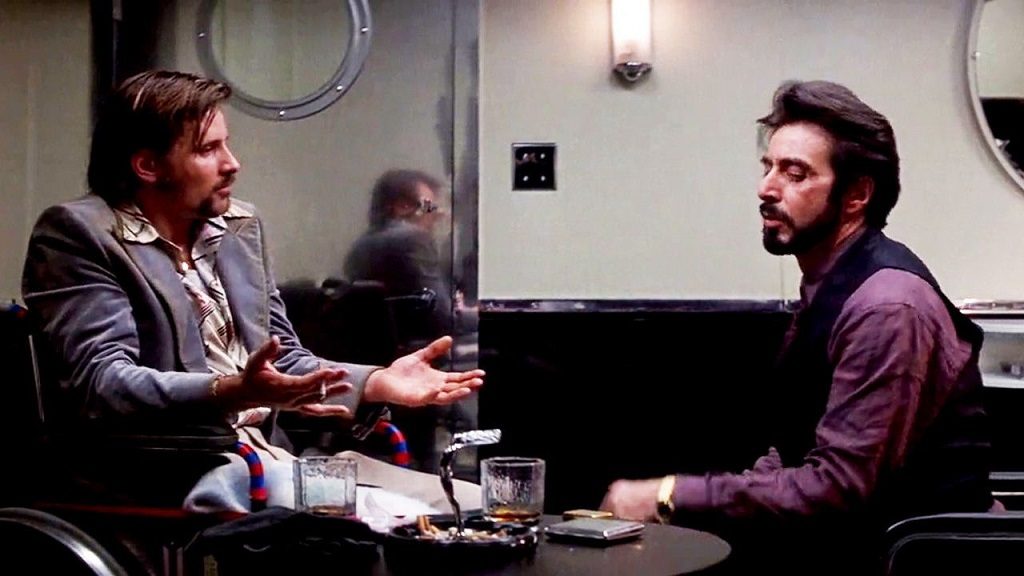
And there is a fun talk with screenwriter David Koepp (Jurassic Park), who goes over his initial reaction to the picture. He was thrilled, but De Palma warned him that critics wouldn’t be so kind. Koepp says De Palma specific some of the preconceived notions press members would have about himself and the cast, explaining exactly what they would criticize and the personal reasons for doing so. As it turned out, De Palma very accurately predicted the majority of reviews.
The discs contain two film expert commentaries (one is a shorter, selected scene commentary) from Matt Zoller Seitz and Dr. Douglas Keesey. Both are interesting, although it is fun to see varying ideas and opinions on the title that don’t always align. Of course, that in part is what makes the feature interesting and keeps viewers rewatching the title and looking for more details.
Both note that it is equally inspired by gangster movies and film noirs (with a hint of westerns thrown in too). The first one asserts that the opening scene gives away the finale, while the other notes that there’s a line or two in the opening narration that makes things uncertain. I agree with the latter opinion and that is the way I remember feeling about the events the first time I saw it (and the flashbacks are so compelling that by the time the movie circles back to the beginning it still takes us by surprise). Yet, there are other instances and thoughts from the first track that make more sense to me. In the end, each is certainly worth a listen. Both note the use of camera and there is a lot of attention to little details and how the movie incorporates different photography techniques to create either a sense of conflict or warmth between Brigante and Gina.
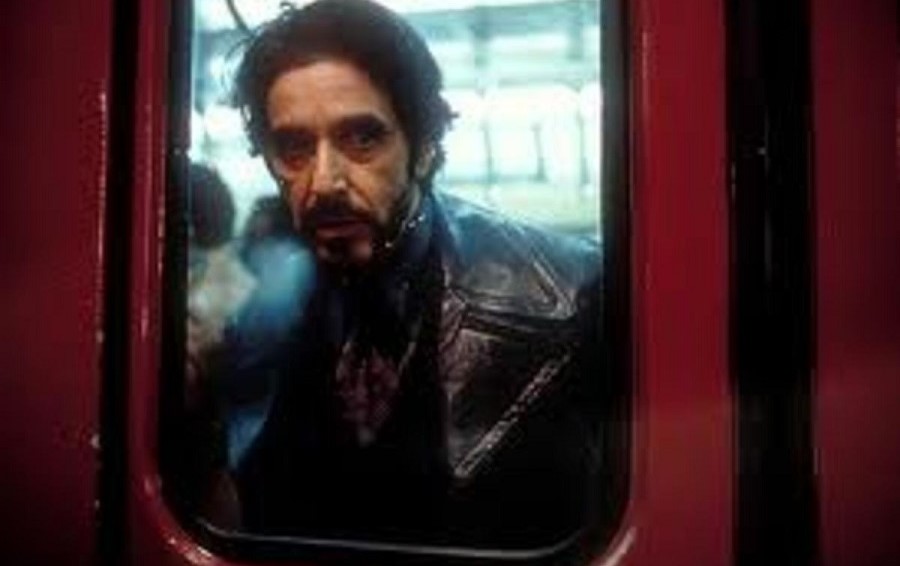
There’s also an interview with Judge Edwin Torres on the two books (Carlito’s Way and After Hours) that the movie was based on. Curiously, After Hours was the primary source, but the picture ended up being named after the first novel. There’s also an excellent new interview with editors Bill Pankow and Kristina Boden, who talk about their great experience working with De Palma and the mad rush to complete the movie. They note that the production had a very tight deadline and had to be finished and in theaters about two months after shooting had been completed.
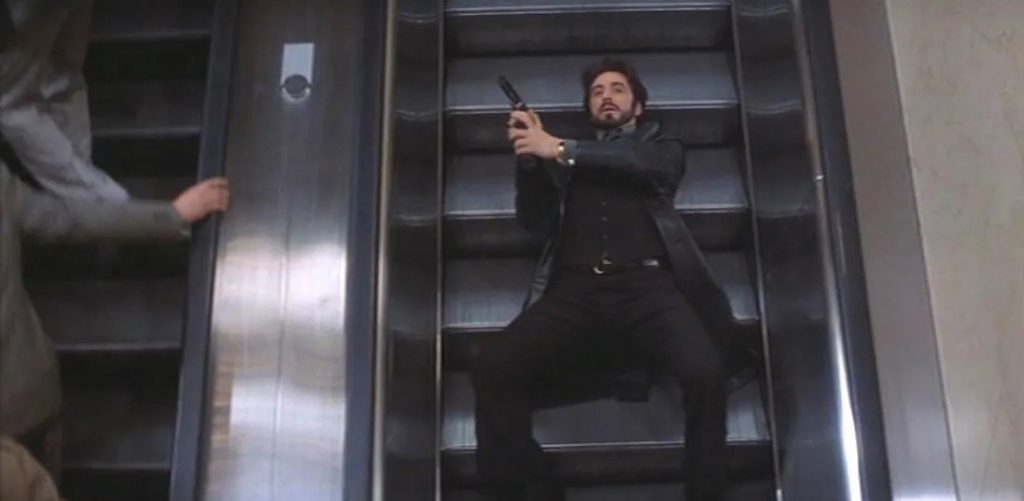
And the disc contains a look at the locations used and how they look today. Additionally, the release includes an original promo featurette, deleted scenes (in standard definition) and promotional materials.
As mentioned, Carlito’s Way is a personal favorite of this writer. The new “Limited Edition” 4K Ultra HD and Blu-ray of the movie doesn’t disappoint. If you like De Palma, gangster movies, or film noirs, you really can’t go wrong with this release. It’s a stellar effort all around!


